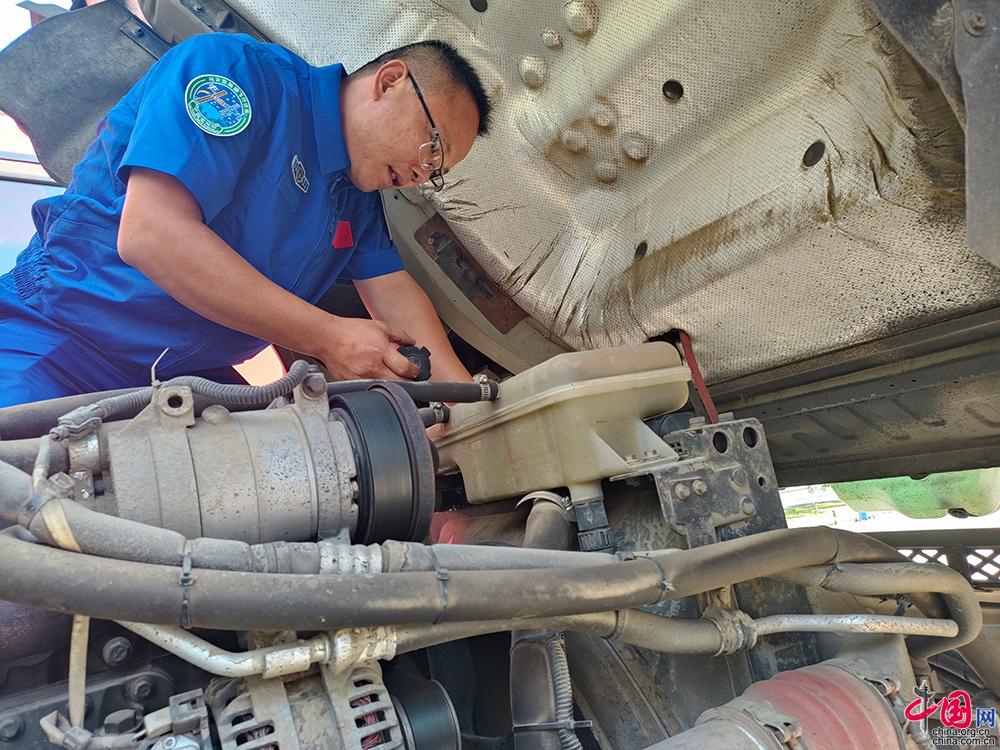Easy to break the kitchen knife?Metal learning knowledge takes you to find out behind the scenes
Author:China Popular Science Expo Time:2022.08.03
The kitchen knife, as the essential tool for kitchen, is the most basic requirement for it. If it breaks, everyone may feel that the quality of this kitchen knife will be a problem, and it must be cut off.

Picture source: veer
But in fact, the easy -to -cut kitchen knife may have little to do with the material used, but it is related to the type of kitchen knife. Today, we will look at the objective reasons behind the breakfast breakfast from the perspective of metal materials and metal processing. I also hope that this article can provide you with some related knowledge of buying and maintaining kitchen knives.
The stainless steel kitchen knife is not integrated
In recent years, integrated stainless steel knives (hereinafter referred to as the tangent stainless steel knife or integrated knife & tip) are very popular. The so -called integrated form is a whole from the appearance of the knife body and handle, that is, the throughout the body is composed of stainless steel.
Its benefits are very obvious. Beauty and hygiene are the biggest selling points of this type of tool. The stainless steel of the whole body can not only highlight the silver -white metal luster, but also does not happen in the breeding problem of bacterial breeding at the wooden handle and even the joints of the knife handle and the knife body.
However, there is actually a common problem in this type of tool, that is, the probability of a knife body from a knife from the knife handle is much higher than the general split -style knife appliance. Why is this?

Picture source: China News Network
In fact, the all -in -one tools look like a whole, but it is formed after the knife body and the handle are welded together.
Many people may have doubts, why can't the knife be formed at a time? For example, putting the ingredients of the kitchen knife in the mold, can a stamping can not be formed?
This problem is very depth, and many of them are actually made like this. However, it must be said that integrated tools may have to take a separate way to manufacture and welding. The main reasons for this are the following three:
First, although the blade body is stainless steel, although the steel and the steel handle may be stainless steel, the specific cards are generally different. As the core of the knife, the body needs to use high -grade materials with excellent comprehensive performance, and the handle can be used as an affiliated structure. As long as a certain condition does not occur, it can meet the demand, so there is no need to unify the material of the two from the perspective of cost.

Picture source: veer
Moreover, many knives use the so -called Sanhe Steel, that is, the middle of the stainless steel intermediate top steel, which can ensure that the kitchen knife has the best comprehensive mechanical properties. The modern kitchen knife factory is used to buy the body material directly in the form of steel plates, and there is no need to refine the traditional forging knife technology. In order to ensure the efficiency of the production of large -scale assembly lines, the body and handle have to be manufactured separately.
Second, compared to non -processing non -processing metals such as copper aluminum, the heat processing temperature of steel is higher, and the processing of processing is more significant. To put it plainly, the energy consumed is much higher. It is suitable for molding with mold forging or stamping.
Of course, a separate knife body or handle will still go through a series of mechanical processing processes. For example, the blade body may be cut and rolled slightly by stamping, and the handle may use stamping or even CNC cutting to obtain the required shape.
Third, the welding process that connects the knife body and the handle is called hot melt, which is already a very mature process technology. And in reality, even if the weld is broken, it rarely causes serious safety hazards. After all, the safety allowance of kitchen knives and aircraft for sudden breaks is not a magnitude of magnitude. Therefore, many manufacturers are unwilling to spend unnecessary costs on this.
In reality, the knife handle seams are sometimes straight (vertical with the center line of the knife handle), and sometimes oblique lines. After the hot melt, the appearance is also required, so the welds are often very unaware.
The culprit of the fracture of the kitchen knife: the residual thermal stress after welding
After the above explanation, I believe that everyone can understand the necessity of welding the knife body and handle. Compared with the overall structure, the welding part is generally the most vulnerable link, which is exactly the same as our common sense of life.
Not only welding, but also connecting joints such as bonding, sintering, electronic welding, etc., which are generally the first part of the first break under the action of external forces. From this perspective, the integrated kitchen knife that needs to be welded has structural defects.
Therefore, from the perspective of protecting products and avoiding danger, we should try to prevent the fall of the kitchen knife and other situations that cause a greater impact to avoid the occurrence of a knife impact break.
However, some friends may ask questions -the broken position of many kitchen knives is obviously not the location of the weld, but a place where there is a certain distance from the weld. Is this the explanation? Can't stop?

Picture source: veer
Don't panic first, let's take a look at how the welding process operates. Before the welding process is carried out, in fact, the knife body has completed a key thermal treatment process, which has good comprehensive performance, which is strong and tough. If such steel plates have a small impact on the side, it is almost impossible for destructive breaks to break. Essence
For example, we hold a steel plate with a steel plate and shoot hard rocks from the side. As long as it is not a large mixed or stomach in the product, it is almost impossible to break. The primary defects such as mixed or stomach should be fully eliminated after the steel plate through the appropriate manufacturing process.
During the welding, because the melting point of the steel material is very high, the method of centralized heating is needed to make the two welding surfaces reach a very high temperature, and obvious local softening occurs. There are two reasons for heating only:
First, the knife body has been completed as a whole. If heated again, it will only make the toughness effect produced by thermal treatment or disappear completely.
Second, heating is not only unnecessary, but also consumes a lot of energy. Generally speaking, the factory will accurately heal welds with various methods such as arc welding, local induction, laser, and electronic beams. At the same time, in fact, pressure will be used to make the two co -surfaces closer to promote the tightness of the weld.
After the welding is completed and mechanically polished, the welds are very not obvious from the appearance, and in terms of test intensity, the weld is not as weak as we think.
However, why are there a lot of knives in life? In fact, in addition to the vulnerability of the weld itself, the thermal stress generated during the welding process is the culprit behind most "tragedies".
Why can't we eradicate the effects of residual thermal stress?
Thermal stress is an internal force inside the material. In the heated or cooling materials, thermal stress is easy to produce. Its existence is sometimes favorable, or even deliberately applied, such as the production of tempered glass. However, in most cases, thermal stress is harmful to the stability of the material and needs to be controlled and eliminated.
The occurrence of thermal stress is actually the inevitable result of thermal expansion and contraction. During the cooling process after heating, the steel tissue near the heating area will inevitably have a phenomenon of part of the deformation trend greater than other parts of the deformation trend.
The kitchen knife is a rigid body with a uniform appearance and determined shape, so local internal stress will appear inside the material.
In other words, the materials at this time are in an inner instability, and in vernacular, it is "holding energy." This energy will be accompanied by a tool throughout the life cycle, so our kitchen knife is not only rough, but also the wild heart.
Do not underestimate these residual stress, they will cause fine cracks inside the material. If the appropriate external force is encountered, the fine cracks may instantly expand to a devastating break in an instant.
Although the stress will be removed to a certain extent after the welding is completed, for example, it will be heated again for a long time at a lower temperature to make the internal stress balance.
However, excessive treatment may damage the overall mechanical properties of the material, which reduces the toughness that it is difficult to obtain. Therefore, it is actually impossible to completely eliminate the thermal stress caused by welding.
In our daily life, the sudden explosion of tempered glass is the result of the internal stress, and our current tempered glass production process cannot completely avoid such accidents (in fact, the tempered glass will experience various strict strict before the factory will go out of the factory. Delivered tests so that the products that exist in hidden dangers are broken during the test).
Broken tempered glass picture Source: veer

In the same way, the stainless steel kitchen knife cannot completely avoid the sudden break of the knife body. As for the position of the break, it usually appears at the weld with the most thermal stress, and of course it may also appear around the weld, which depends on the position of the micro -crack and the direction of the extension.
Of course, this is not to say that the all -in -one kitchen knife will definitely break, but that compared to the traditional structure of the kitchen knife (the steel in their knife body and the steel handle is a piece of material formed at the same time). The overall break of the knife body is prone to occur.
All in all, for companies that manufacture tools, the welding strength needs to be improved as much as possible while improving the welding process to avoid excessive residual thermal stress.
Produced: Popular Science China
Author: Zhang Hao (Ph.D. in Materials)
Producer: China Science Popularization Expo
Edit: Wang Tingting
references:
1. ー ル ス オ ン オ ス 包 の の の の 1
https://modama.net/knife/tips23.html
The China Science Popularization Expo is the Science Popular Science Platform of the Chinese Academy of Sciences. It is sponsored by the Computer Network Information Center of the Chinese Academy of Sciences. Relying on the high -end scientific resources of the Chinese Academy of Sciences, it is committed to spreading cutting -edge scientific knowledge and providing fun science and education services.

- END -
Wanli Winning Road | Xisha Satellite Observation Station successfully completed the remote sensing 35 group 03 group of satellite observation tasks

At 21:28 on July 29, 2022, my country used the Long March 2 Ding Yun Rockets at th...
The harm of plastics is unprecedented, and biological plastics are more likely to induce biological errors!

Science Fiction Network July 4th (Liu Yazhu) As we all know, plastic fragments and...